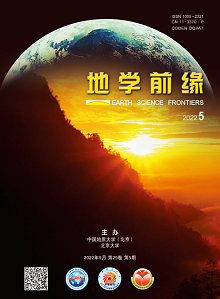To investigate the sediment compositions, sources, and formation processes in the abyss and hadal zone of the northern Yap Trench, scan electron microscope (SEM) and X-ray energy spectroscopy (EDS) were used to analyze in 1 cm interval of the 0-8 cm sediment layer of five core samples collected at different depths. The compositional analysis included water content, manganese nodule content, concentrations of six major metal elements (Al, Ca, Fe, Mn, Ti, Mg) and nine trace metal elements (Ba, Co, Cr, Ni, Pb, Sr, V, Cu, Zn), and total organic carbon (TOC). According to the analysis results, sediments in the study area are mainly deep-sea ooze, a complex mixture of sediments from different eras. They contain microfossils produced by coccolithophores, such as Discoaster, sponge spicules, radiolarians, and diatoms, and various minerals, including pyroxene, barite, ilmenite, and feldspar. The sediment sources are complex, including mainly biological, volcanic and terrestrial (found in the abyss on the west side of the trench) sources as well as submarine hydrothermal fluids. Manganese nodules develop more easily in sediments off the cliffs on the west side of the trench than on the east side. The abyssal and hadal sediments in the northern Yap Trench have relatively high water content and large particle size, and the water content tends to decrease with depth. The sediment TOC content and microfossil abundance are higher in hadal than in abyssal sediments, indicating obvious funnel effect. As a whole, the water and TOC content of the sediments are lower on the west side of the trench than on the east side. The carbonate compensation depth in the northern Yap Trench ranges between 4435-4568 m, changing from below 4568 m since the Pleistocene. The sedimentary environment in the study area is oxic, where mixing and redeposition of ancient and modern sediments occur in the 0-8 cm sediment layer, causing the formation age to vary greatly. Factors influencing sediment formation include trench slope, hydrodynamic environment, gravitational collapse, turbidity current deposition, volcanic activity, and funnel effect.

